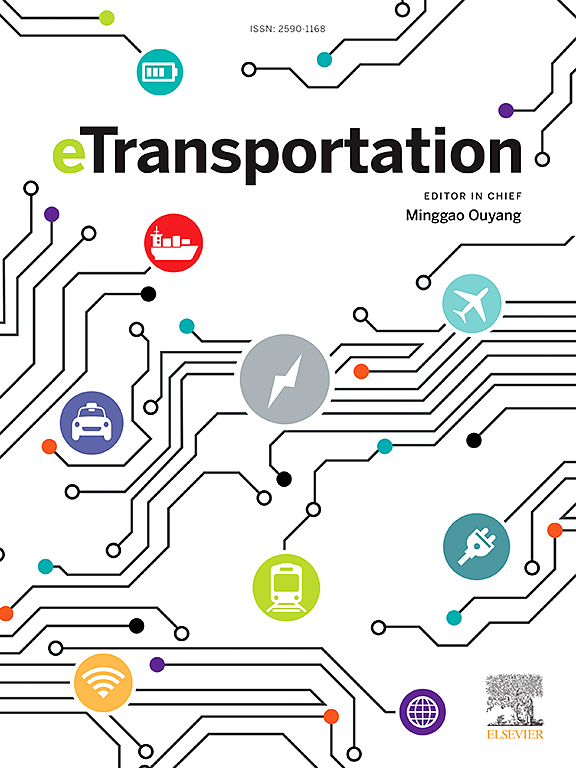Liquid hydrogen refueling stations as an alternative to gaseous hydrogen refueling stations: Process development and integrative analyses
IF 17
1区 工程技术
Q1 ENERGY & FUELS
引用次数: 0
Abstract
The use of clean hydrogen is gaining attention as part of efforts to establish a sustainable energy value chain. However, current hydrogen refueling stations remain energy-intensive. To utilize hydrogen more cleanly, a thorough analysis of hydrogen refueling stations from an energy efficiency perspective is necessary. Liquid hydrogen refueling stations are emerging as an environmentally friendly alternative to current gaseous hydrogen refueling stations. For liquid hydrogen refueling stations to carve out a niche in a well-established market dominated by gaseous hydrogen refueling stations, the hydrogen selling price must be competitive. In this research, an energy-optimized design for liquid hydrogen refueling stations was proposed, focusing on reducing operating costs and mitigating potential environmental impacts. The developed design integrated three energy-saving systems into a basic liquid hydrogen refueling station: 1) a heat exchange system for hydrogen pre-cooling, 2) an organic Rankine cycle for waste heat recovery, and 3) a catalytic combustor for utilizing boil-off gas. To assess the viability of the integrated process, case studies were conducted focusing on economic, environmental, energy, and exergy performance. Consequently, the proposed design with integrated energy-saving systems demonstrated that while it increased the minimum hydrogen selling price by 5 % compared to the basic liquid hydrogen refueling station, it could reduce global warming potential by 41 %. We expect that our results will provide a better way to build the infrastructure of hydrogen refueling stations with the growth of the future hydrogen fuel cell electric vehicle market.
液氢加氢站作为气体加氢站的替代方案:工艺开发和综合分析
作为建立可持续能源价值链的一部分,清洁氢的使用正在引起人们的关注。然而,目前的加氢站仍然是能源密集型的。为了更清洁地利用氢气,有必要从能源效率的角度对加氢站进行彻底的分析。液氢加氢站作为一种环境友好的替代方案,正在成为目前气体加氢站的替代品。液氢加氢站要想在由气态加氢站主导的成熟市场中占据一席之地,氢的销售价格必须具有竞争力。本文提出了一种液氢加氢站的能量优化设计方法,以降低运行成本和减轻潜在的环境影响为重点。开发的设计将三个节能系统集成到一个基本的液氢加氢站中:1)用于氢预冷的热交换系统,2)用于废热回收的有机朗肯循环,以及3)用于利用蒸发气体的催化燃烧室。为了评估综合过程的可行性,对经济、环境、能源和能源绩效进行了案例研究。因此,集成节能系统的建议设计表明,与基本液氢加氢站相比,它将最低氢销售价格提高了5%,但它可以降低41%的全球变暖潜势。我们期望我们的研究结果将为未来氢燃料电池电动汽车市场的增长提供更好的加氢站基础设施建设方法。
本文章由计算机程序翻译,如有差异,请以英文原文为准。
求助全文
约1分钟内获得全文
求助全文
来源期刊

Etransportation
Engineering-Automotive Engineering
CiteScore
19.80
自引率
12.60%
发文量
57
审稿时长
39 days
期刊介绍:
eTransportation is a scholarly journal that aims to advance knowledge in the field of electric transportation. It focuses on all modes of transportation that utilize electricity as their primary source of energy, including electric vehicles, trains, ships, and aircraft. The journal covers all stages of research, development, and testing of new technologies, systems, and devices related to electrical transportation.
The journal welcomes the use of simulation and analysis tools at the system, transport, or device level. Its primary emphasis is on the study of the electrical and electronic aspects of transportation systems. However, it also considers research on mechanical parts or subsystems of vehicles if there is a clear interaction with electrical or electronic equipment.
Please note that this journal excludes other aspects such as sociological, political, regulatory, or environmental factors from its scope.
 求助内容:
求助内容: 应助结果提醒方式:
应助结果提醒方式:


